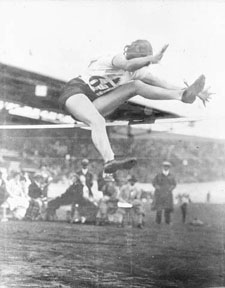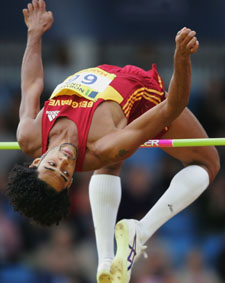


The high jump is one of three athletic jumping events. Unlike the pole vault, competitors must jump over a horizontal bar placed at measured heights without any assistance. Athletes have three chances to jump over the bar. If they succeed, the bar is raised and they get another three attempts to clear the next height.
While it’s possible to pass at any point, competitors only have the number of jumps left at that height to get over the higher bar. Clearing the bar at the first attempt is ideal not only because it’s less tiring and boosts confidence, but also because any failed jumps count against in the event of a tie for medal places.

Though contested since the Olympic Games of ancient Greece, increasingly effective techniques have been pioneered by athletes in the centuries since.
Early jumpers either approached the bar straight on or used a scissors technique, in which the bar is approached diagonally and the jumper throws both legs over the bar in a scissoring motion.
Later athletes developed this into a more efficient straddle technique. Straddle jumpers take off at a diagonal as with the scissors technique, but use the inner leg to take off before thrusting the outer leg up to lead the body sideways over the bar. In the parallel straddle the head and body pass the bar at the same time, while in the diving straddle the athlete rotates his torso around the bar for more efficient clearance.

Jumpers had to land carefully to prevent injury in the sawdust or low matting previously used landing pits. But the introduction of raised, softer landing mats allowed Dick Fosbury to pioneer a new technique by throwing himself over the bar head and shoulders first and landing on his back. After he brought attention to his innovation by winning gold at the 1986 Olympic Games, the Fosbury Flop was rapidly adopted by high jumpers and is now used universally, though athletes still use the other techniques to help warm up and train.